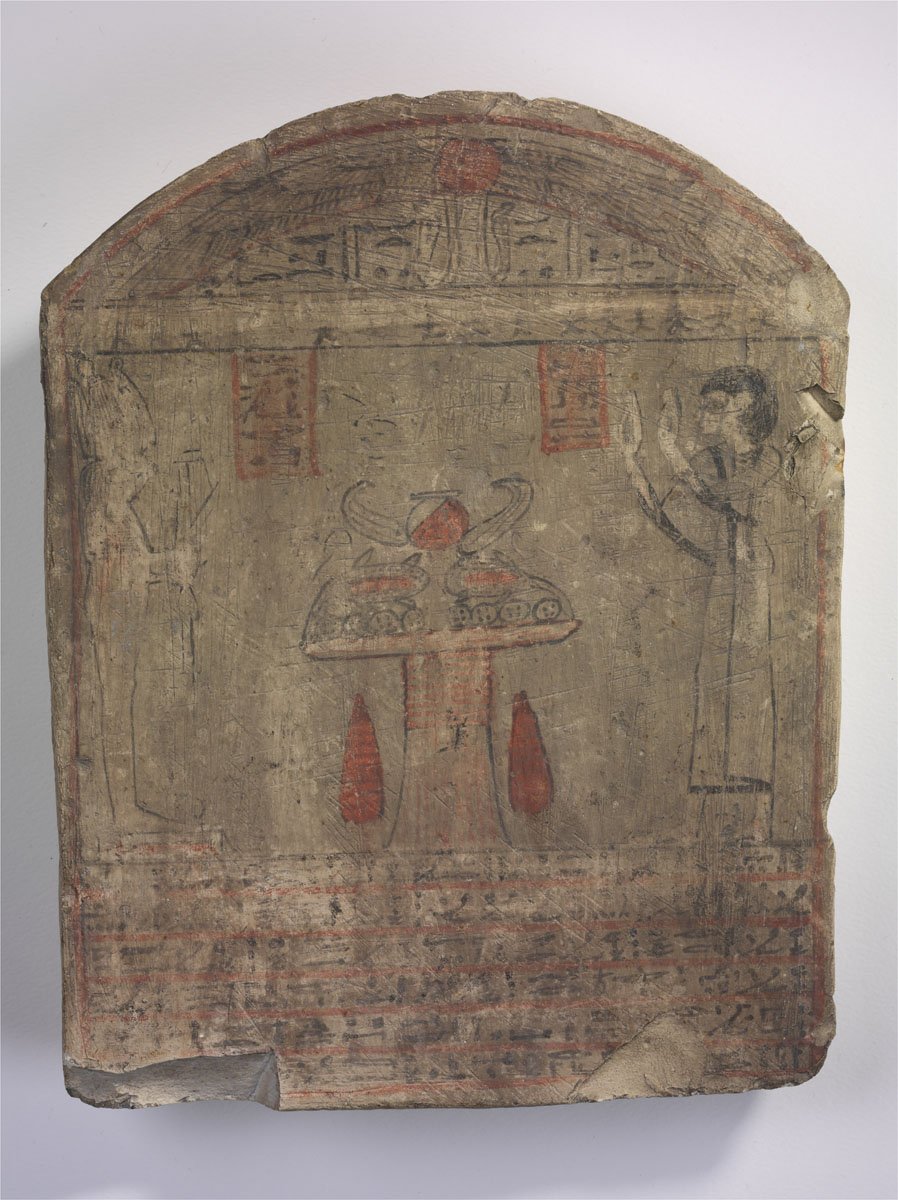
Funerary Stela
Egyptian Art
| Date | second half of the 1st millennium BC |
|---|---|
| Object type | amulet |
| Medium, technique | Egyptian faience |
| Dimensions | 2.5 × 1.2 × 2.8 cm |
| Inventory number | 56.62-E |
| Collection | Egyptian Art |
| On view | This artwork is not on display |
The greenish-blue Egyptian faience fragment depicts a finely modelled walking lion. On the back of the animal, most probably the standing figure of god Nefertum was represented, stepping forward with his left foot, of which only the two feet remained. Nefertum was the primeval lotus flower upon which the young sun god rose above the waters of chaos at the beginning of creation. The god was believed to be the child of the Memphite Ptah and Sekhmet and was usually depicted with a male human body wearing a lotus headdress with two tall feathers. The figure of the deity so closely connected with creation and the solar cycle could ensure regeneration and rebirth for the owner of the amulet. This type of amulet, which depicted the god standing on the back of a crouching or walking lion appeared during the 26th dynasty (ca. 664–525 BC).
Győry, Hedvig, “Une amulette représentant Néfertoum-sur-le-lion à Budapest”, in VI Congresso Internationale di Egittologia. Torino, 1-8 settembre 1991, Atti, Volume I, Torino, 1992, p. 233-236.
This record is subject to revision due to ongoing research.